Preventing Athlete’s Foot
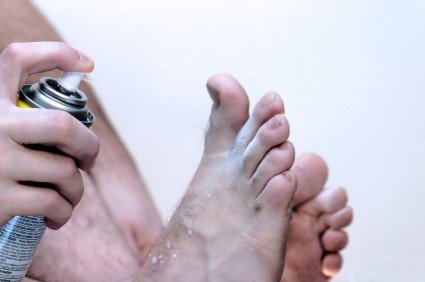 Odor emanates from people’s feet due to sweat or a lack of good hygiene practices. Bacteria can form as a result of either of these two reasons, and it may produce a strong odor. They tend to form around areas that are moist on your feet, and they feed on skin oils and dead cells. When bacteria thrive, they eliminate waste in the form of organic acids, which causes feet to smell. In order to keep your feet bacteria free, you should change your socks daily, keep your toenails clipped and clean, dry feet thoroughly after showering, and swab in between your toes with rubbing alcohol.
Odor emanates from people’s feet due to sweat or a lack of good hygiene practices. Bacteria can form as a result of either of these two reasons, and it may produce a strong odor. They tend to form around areas that are moist on your feet, and they feed on skin oils and dead cells. When bacteria thrive, they eliminate waste in the form of organic acids, which causes feet to smell. In order to keep your feet bacteria free, you should change your socks daily, keep your toenails clipped and clean, dry feet thoroughly after showering, and swab in between your toes with rubbing alcohol.
Athlete’s foot is an inconvenient condition that can be easily reduced with the proper treatment. If you have any concerns about your feet and ankles, contact Dr. Steven Shlonsky of Kentucky. Dr. Shlonsky can provide the care you need to keep you pain-free and on your feet.
Athlete’s Foot: The Sole Story
Athlete's foot, also known as tinea pedis, can be an extremely contagious foot infection. It is commonly contracted in public changing areas and bathrooms, dormitory style living quarters, around locker rooms and public swimming pools, or anywhere your feet often come into contact with other people.
Solutions to Combat Athlete’s Foot
- Hydrate your feet by using lotion
- Exfoliate
- Buff off nails
- Use of anti-fungal products
- Examine your feet and visit your doctor if any suspicious blisters or cuts develop
Athlete’s foot can cause many irritating symptoms such as dry and flaking skin, itching, and redness. Some more severe symptoms can include bleeding and cracked skin, intense itching and burning and even pain when walking. In the worst cases, athlete’s foot can cause blistering as well. Speak to your podiatrist for a better understanding of the different causes of athlete’s foot, as well as helping you figure out which treatment options are best for you.
If you have any questions, please feel free to contact our office located in Louisville, KY. We offer the newest diagnostic tools and technologies to treat your foot and ankle needs.
What Do Podiatrists Treat?
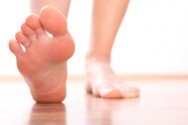 While most people understand that podiatrists are foot doctors, many people still may not comprehend a podiatrist’s work and the various conditions a podiatrist treats. Various foot problems that many people experience and that a podiatrist can treat include plantar fasciitis, ingrown toenails, bunions, hammertoes, and flat feet.
While most people understand that podiatrists are foot doctors, many people still may not comprehend a podiatrist’s work and the various conditions a podiatrist treats. Various foot problems that many people experience and that a podiatrist can treat include plantar fasciitis, ingrown toenails, bunions, hammertoes, and flat feet.
Among the group who sought podiatric help, 88% reported a quick diagnosis and 76% received treatment that eliminated the problem. A third of the group said that their visits to the podiatrist exposed other health concerns, such as diabetes, circulatory issues, and nerve issues.
"It's not surprising to see how many people are affected by foot pain, when survey results show that we view our feet as the least important body part in terms of our overall health and wellbeing," said AMPA President Frank Spinosa. "Our feet are literally and figuratively the furthest things from our minds."
If you are experiencing pain in the feet or ankles, don’t join the stubborn majority refusing treatment. Feel free to contact Dr. Steven Shlonsky of Kentucky. Dr. Shlonsky can provide the care you need to keep you pain-free and on your feet.
What is a Podiatrist?
Someone would seek care of a podiatrist when they have suffered a foot injury or have common foot ailments such as: heal spurs, bunions, arch problems, deformities, ingrown toenails, corns, foot and ankle problems etc.
Podiatric Treatment
A podiatrist will treat the problematic areas of the feet, ankle or lower leg by prescribing the following:
- physical therapy
- drugs
- perform surgery on lower extremity fractures
- orthotic inserts or soles
A common podiatric procedure a podiatrist will use is a scanner or force plate which will allow the podiatrist to know the designs of orthotics. Patients are then told to follow a series of tasks to complete the treatment. The computer will scan the foot a see which areas show weight distribution and pressure points. The podiatrist will read the analysis and then determine which treatment plans are available.
If you have any questions, please feel free to contact our office located in Louisville, KY. We offer the newest diagnostic and treatment technologies for all your foot care needs.
What is a Podiatrist
The branch of medicine that is focused on the treatment, diagnosis, and study of disorders of the lower leg, ankle and foot is referred to as podiatry. Because people often spend a great deal of their time on their feet, many problems in this area can occur. A person seeks help from the field of podiatry when they need treatment for heel spurs, bunions, arch problems, deformities, ingrown toenails, corns, foot and ankle problems, infections, and problems with the foot that are related to diabetes and additional diseases.
To treat problems of the foot, ankle or lower leg, a podiatrist may prescribe physical therapy, drugs, perform surgery, or set fractures. Individuals may also be recommended to wear corrective shoe inserts, custom-made shoes, plaster casts and strappings in order to correct deformities.
When trying to gather information on a patient problem, a scanner or force plate may be used in order to design orthotics. During this procedure, patients are told to walk across a plate that is connected to a computer; the computer then takes a scan of the foot and indicates weight distribution and pressure points. The computer readouts will give the podiatrist information to help them determine the correct treatment plans.
Diagnosis is also provided through laboratory tests and x-rays. Through the foot, the first signs of serious problems such as heart disease, diabetes and arthritis can show up. For example, individuals that have diabetes may frequently have problems such as infections and foot ulcers because they experience poor circulation in the foot area. A podiatrist can then have consultations with patients when symptoms arise. Referrals will then be made to specialists that handle the greater health problems.
Some podiatrists have their own independent, private practices or clinics where they have a small staff and administrative personnel. Many podiatrists work within group practices. They usually spend time performing surgery in ambulatory surgical centers or hospitals, or visit patients in nursing homes. Podiatrists typically spend between 30 to 60 hours of week working. Some podiatrists specialize in public health, orthopedics, surgery, or primary care. Other fields include specialties in geriatrics, dermatology, pediatrics, diabetic foot care and sports medicine.
Some podiatrist specialists complete extra training in the area of foot and ankle reconstruction that results from the effects of physical trauma or diabetes. There are also surgeons that perform surgery of a cosmetic nature to correct bunions and hammertoes.
Wear Shoes That Have Proper Support
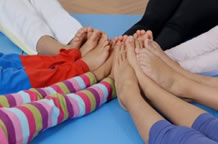 Wearing shoes that have proper support for the feet is crucial in maintaining foot health. High heels are not the only shoes that should come to mind when thinking of shoes that lack support. Flats, sandals, and shoes made with synthetic fabrics are equally as bad as heels in terms of the amount of support they provide. Flip-flops have been linked to foot, ankle, and knee pain as well as gait abnormalities. It is important to be selective when choosing a pair of shoes in order to prevent injury as well as other difficulties while walking.
Wearing shoes that have proper support for the feet is crucial in maintaining foot health. High heels are not the only shoes that should come to mind when thinking of shoes that lack support. Flats, sandals, and shoes made with synthetic fabrics are equally as bad as heels in terms of the amount of support they provide. Flip-flops have been linked to foot, ankle, and knee pain as well as gait abnormalities. It is important to be selective when choosing a pair of shoes in order to prevent injury as well as other difficulties while walking.
Every day foot care is very important to prevent infection and other foot ailments. If you need your feet checked contact Dr. Steven Shlonsky of Kentucky. Dr. Shlonsky can provide the care you need to keep your pain-free and on your feet.
Every Day Foot Care
Often, people take care of their bodies, face and hair more so than they do for their feet. But the feet are a very important aspect of our bodies, and one that we should pay more attention to. After all, without our feet, we would not be able to perform most daily tasks. It is best to check your feet regularly to make sure there are no new bruises or cuts that you may not have noticed before, for example.
For dry feet, moisturizer can easily be a remedy and can be applied as often as necessary to the affected areas. Wearing shoes that fit well can also help you maintain good foot health, as well as making it easier to walk and do daily activities without the stress or pain of ill-fitting shoes, high heels, or even flip flops.
Also, wearing clean socks with closed shoes is important to ensure that sweat and bacteria do not accumulate within the shoe. Clean socks help to prevent athlete’s foot, fungi problems, bad odors, and can absorb sweat.
If you have any questions, please feel free to contact our offices located in Louisville, KY. We offer the newest diagnostic tools and technology to treat your foot and ankle needs.
Massage Therapists Can Assist with Foot Ailments
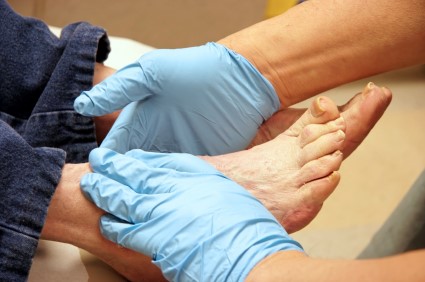 Arthritis is a common condition that can affect the feet as well as many other parts of the body. Fortunately for those who suffer from the condition, there are massage options available in order to alleviate pain and stiffness. Massage therapists can help those who struggle with discomfort. Mild stretches combined with self-guided muscle release steps will have a positive impact on your body. Massage techniques can also be customized in order to fit your needs and limitations.
Arthritis is a common condition that can affect the feet as well as many other parts of the body. Fortunately for those who suffer from the condition, there are massage options available in order to alleviate pain and stiffness. Massage therapists can help those who struggle with discomfort. Mild stretches combined with self-guided muscle release steps will have a positive impact on your body. Massage techniques can also be customized in order to fit your needs and limitations.
Foot therapy is necessary for those recovering from both foot deformities and foot injuries. If you have concerns regarding therapy, contact Dr. Steven Shlonsky of Kentucky. Dr. Shlonsky can provide the care you need to keep your pain free and on your feet.
Most common injuries
People who are constantly on their feet are prone to a variety of injuries. Therefore, it is important to take part in physical therapy in order to get back on the right track quickly.
What to do when injured
Physical Therapy – This specialized treatment will focus on the affected area, speeding up recovery and the overall healing process. This is important for those wanting to get back into the game quickly. It is a proven method that has helped millions of people return from any injury.
During physical therapy you will undergo regimented training to get back into full form. Training is often very difficult, especially at first when the foot feels weak. These are some steps physical therapy often involves:
- Basic stretching & twisting exercises – getting the feet’s mobility and flexibility up.
- Massaging – the therapist will massage the injured area in order to activate the muscles and relax them.
- Strengthening Exercises – this allows the muscles in the affected area to regain their full strength, a vital step towards full recovery.
If you have any questions please feel free to contact our office located in Louisville, KY. We offer the newest diagnostic tools and technology to treat your foot and ankle needs.
Foot Therapy for Sports Injuries
Whether in practice or in the game, athletes put their bodies through great stress. Some sports demand more from the body than others. However, every sport has an element of inorganic movement or unnatural motion. For example, in softball, a pitcher winds up and flings her body with an incredible amount of dexterity in order to get the most ideal velocity out of her pitches. This motion, incredibly taxing on the body, can cause serious injury.
One of the most common issues of athletic injuries happens in the feet. If it’s a damaging fracture that leaves the athlete sidelined or just a simple turf toe, foot injuries can still be very frustrating and painful. Regardless of the sport, athletes still require use of their feet in some fashion. This is why foot therapy is extremely vital for getting athletes back on the right track to return to the field.
No matter the injury, the best way to speed up the recovery period is to receive physical therapy. Physical therapy has proven to work for millions of people. Professional physical therapists are specifically trained to help people return to proper form from any injury.
During physical therapy, you will go through organized training in order to get back into form. Sometimes training can be quite difficult, especially in the beginning when there is more pain and the foot feels awkward. To alleviate this, you will do basic twisting and stretching exercises in order to get flexibility and foot mobility back up. The therapist will also massage the injured area to activate and relax muscles. Over time you will eventually move up to strengthening exercises, designed specifically so that the injured area is exercised.
Foot therapy for sports is a modern science miracle. Unlike other treatments that may employ the use of fancy chemicals and terminology, physical therapy is an evidence-based practice that offers the same benefits. Due to huge advancements in the knowledge of muscles and joints, doctors can turn catastrophic injuries around so that athletes can return to the game once more.
Ill-fitting Shoes Can Contribute to Leg Pain
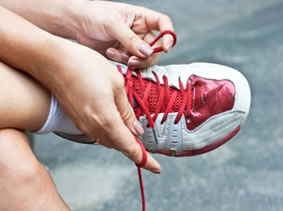 If you’re experiencing leg pain, it may be because of ill-fitting shoes, according to Dr. Samridhi Saxena, senior physiotherapist. Choose the proper shoes, especially if you are an avid exerciser, by using an impression of your foot to help determine your own foot shape and pattern. The type of shoe you wear can also affect your feet in the long term. When choosing shoes, make sure to consider what type of activity you will be wearing the shoes for, and shop accordingly. Treat any leg pain you may experience by stretching the sore muscle and taking a warm shower to alleviate the area.
If you’re experiencing leg pain, it may be because of ill-fitting shoes, according to Dr. Samridhi Saxena, senior physiotherapist. Choose the proper shoes, especially if you are an avid exerciser, by using an impression of your foot to help determine your own foot shape and pattern. The type of shoe you wear can also affect your feet in the long term. When choosing shoes, make sure to consider what type of activity you will be wearing the shoes for, and shop accordingly. Treat any leg pain you may experience by stretching the sore muscle and taking a warm shower to alleviate the area.
Finding a properly-fitting shoe is important in reducing injuries and preventing foot problems. For more information about treatment, contact Dr. Steven Shlonsky of Kentucky. Dr. Shlonsky can provide the care you need to keep your pain free and on your feet.
Proper Shoe Fitting
A common concern when it comes to foot health, having properly fitted shoes can help prevent injuries to the foot. Out feet affect our posture and gait, which in turn affects the biomechanics and overall bodily structure. With 33 joints, 26 bones, and over 100 ligaments, the potential for serious injury is much greater than one realizes. Although the feet cease growth in adulthood, they still change shape as they mature. Here are some factors to consider when it comes to investing in proper fitting shoes:
- Be sure the shoes fit correctly right away
- Ensure the ball of your foot fits comfortably in the widest portion of the shoes
- Even though they may look fashionable, improper fitting shoes can either create adverse conditions or exacerbate existing ones you may already have
- Walk along a carpeted surface to ensure the shoes comfortably fit during normal activity
Keeping in mind how shoes fit the biomechanics of your body, properly-fitting shoes is vitally important. Fortunately, it is not difficult to acquire footwear that fits correctly. Be sure to wear shoes that support the overall structure of your body. Do your feet a favor and invest in several pairs of well-fitted shoes today.
If you have any questions please feel free to contact our office located in Louisville, KY. We offer the newest diagnostic tools and technology to treat your foot and ankle needs.
Running Means Higher Risk of Injury than Walking
 Both walking and running are beneficial exercise for your feet and your body, both of which contribute toward weight loss. However, running is more strenuous, leading to an increased risk of injury. Running “produces ground reaction forces of approximately 2.5 times body weight compared to 1.2 times that for walking,” according to the article. Because of this, it’s important to build up your overall muscles and take breaks when needed. Starting new exercises, especially as intense as running, requires time for your body to adapt so that injury can be prevented.
Both walking and running are beneficial exercise for your feet and your body, both of which contribute toward weight loss. However, running is more strenuous, leading to an increased risk of injury. Running “produces ground reaction forces of approximately 2.5 times body weight compared to 1.2 times that for walking,” according to the article. Because of this, it’s important to build up your overall muscles and take breaks when needed. Starting new exercises, especially as intense as running, requires time for your body to adapt so that injury can be prevented.
Runners can still be prone to running injuries even with proper precautions. If you are suffering from a running injury, contact Dr. Steven Shlonsky of Kentucky. Dr. Shlonsky can provide the care you need to keep your pain free and on your feet.
How to Prevent Running Injuries
Many common running injuries are caused by overuse and overtraining. When the back of the kneecap starts wearing out and starts causing pain in your knee, this is commonly referred to as runner’s knee. Runner’s knee is a decrease in strength in your quadriceps and can occur if you’re not wearing properly fitted or supporting shoes. To prevent runner’s knee, focusing on hip strengthening is a good idea, as well as strengthening your quads to keep the kneecaps aligned.
What Are Some Causes of Running Injuries?
- One cause of a common running injury is called iliotibial band syndrome.
- Plantar fasciitis is also another common injury.
- Stress fractures can occur from overtraining, lack of calcium, or even your running style.
Best Ways to Prevent Running Injuries
- Wear footwear that fits properly and suits your running needs.
- Running shoes are the only protective gear that runners have to safeguard them from injury.
- Make a training schedule. Adding strengthening exercises as well as regular stretching can help keep you strong and limber and can lessen the possibility of injuries.
- Stretching keeps muscles limber, this will help you gain better flexibility.
If you have any questions please feel free to contact our office located in Louisville, KY. We offer the newest diagnostic tools and technology to treat your foot and ankle needs.
Plantar Fasciitis 101
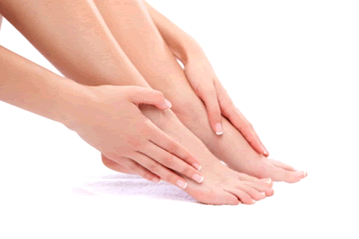 Plantar fasciitis is caused when the arch of the foot becomes inflamed. Each step that a person with the condition takes aggravates the plantar-fascia tissue, making it even more difficult to heal. Plantar fasciitis is the most common foot condition seen by podiatrists. People who are active and always on their feet are likely candidates for the condition. Most people find treatment through over-the-counter medications. However, if your pain persists, you should see a podiatrist
Plantar fasciitis is caused when the arch of the foot becomes inflamed. Each step that a person with the condition takes aggravates the plantar-fascia tissue, making it even more difficult to heal. Plantar fasciitis is the most common foot condition seen by podiatrists. People who are active and always on their feet are likely candidates for the condition. Most people find treatment through over-the-counter medications. However, if your pain persists, you should see a podiatrist
Plantar fasciitis can be very painful and inconvenient. If you are experiencing heel pain or symptoms of plantar fasciitis contact Dr. Steven Shlonsky of Kentucky. Dr. Shlonsky can provide the care you need to keep your pain free and on your feet.
What is Plantar Fasciitis?
Plantar fasciitis is the inflammation of the thick band of tissue that runs along the bottom of your foot, known as the plantar fascia, and causes mild to severe heel pain.
What Causes Plantar Fasciitis?
· Excessive running
· Non-supportive shoes
· Overpronation
· Repeated stretching and tearing of the plantar fascia
How Can It Be Treated?
· Conservative measures – anti-inflammatories, ice packs, stretching exercises, physical therapy, orthotic devices
· Shockwave therapy – sound waves are sent to the affected area to facilitate healing and are usually used for chronic cases of plantar fasciitis
· Surgery – usually only used as a last resort when all else fails. The plantar fascia can be surgically detached from the heel
While very treatable, plantar fasciitis is definitely not something that should be ignored. Especially in severe cases, speaking to your doctor right away is highly recommended to avoid complications and severe heel pain. Your podiatrist can work with you to provide the appropriate treatment options tailored to your condition.
If you have any questions please feel free to contact our office located in Louisville, KY. We offer the newest diagnostic tools and technology to treat your foot and ankle needs.
How to Care for Arthritic Feet
 According to recent research, what you incorporate in your diet can affect your arthritis inflammation symptoms. “The goal of your diet should be to eat foods that have been shown to reduce inflammation, which can help manage symptoms like joint pain, swelling, and tenderness,” says registered dietitian nutritionist Kim Larson. Foods such as fatty fish or omega-3 fish oils, fruits and vegetables, turmeric, and ginger can help alleviate inflammation. However, Larson suggests cutting back on red meat, carbohydrates, and sugar.
According to recent research, what you incorporate in your diet can affect your arthritis inflammation symptoms. “The goal of your diet should be to eat foods that have been shown to reduce inflammation, which can help manage symptoms like joint pain, swelling, and tenderness,” says registered dietitian nutritionist Kim Larson. Foods such as fatty fish or omega-3 fish oils, fruits and vegetables, turmeric, and ginger can help alleviate inflammation. However, Larson suggests cutting back on red meat, carbohydrates, and sugar.
Arthritis can be a difficult condition to live with. If you are seeking treatment, contact Dr. Steven Shlonsky of Kentucky. Dr. Shlonsky can provide the care you need to keep you pain-free and on your feet.
Arthritic Foot Care
Arthritis is a joint disorder that involves inflammation of different joints in your body, such as in your feet. Arthritis is often caused by a degenerative joint disease and causes mild to severe pain in all affected areas. On top of this, swelling and stiffness in the affected joints can also be a common symptom of arthritis.
In many cases, wearing ill-fitting shoes can worsen the effects and pain of arthritis. Wearing shoes that have a lower heel and extra room can help your feet feel more comfortable. In cases of rheumatoid arthritis, the arch in your foot may become problematic. Buying shoes with proper arch support that contour to your feet can help immensely.
Alleviating Arthritic Pain
- Exercises that stretch the foot can prevent further pain and injury and increase mobility
- Most of the pain can be alleviated with anti-inflammatory drugs, heat, and topical medications
- Massages can help to temporarily alleviate pain.
It is best to see your doctor for the treatment that is right for your needs and symptoms. Conditions vary, and a podiatrist can help you determine the right method of care for your feet.
If you have any questions please feel free to contact our office located in Louisville, KY. We offer the newest diagnostic and treatment technologies for all your foot and ankle needs.







